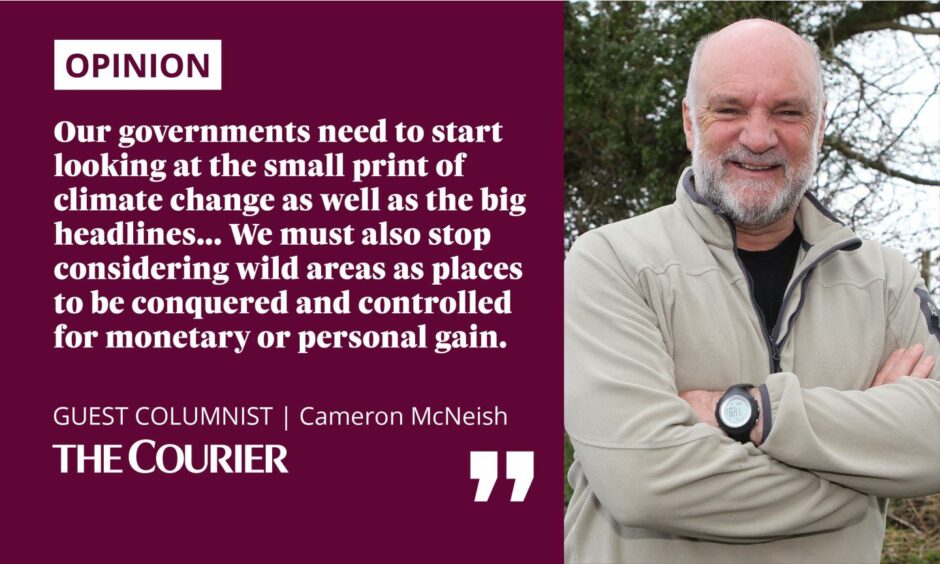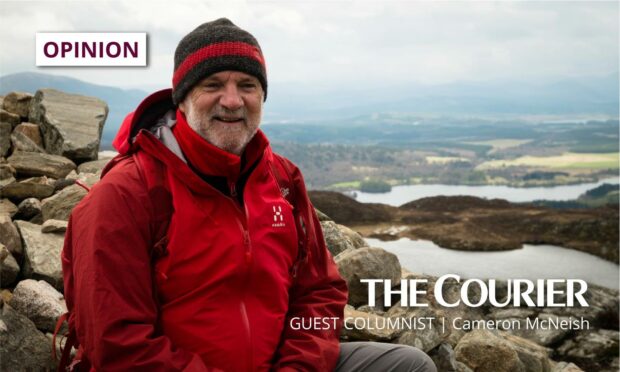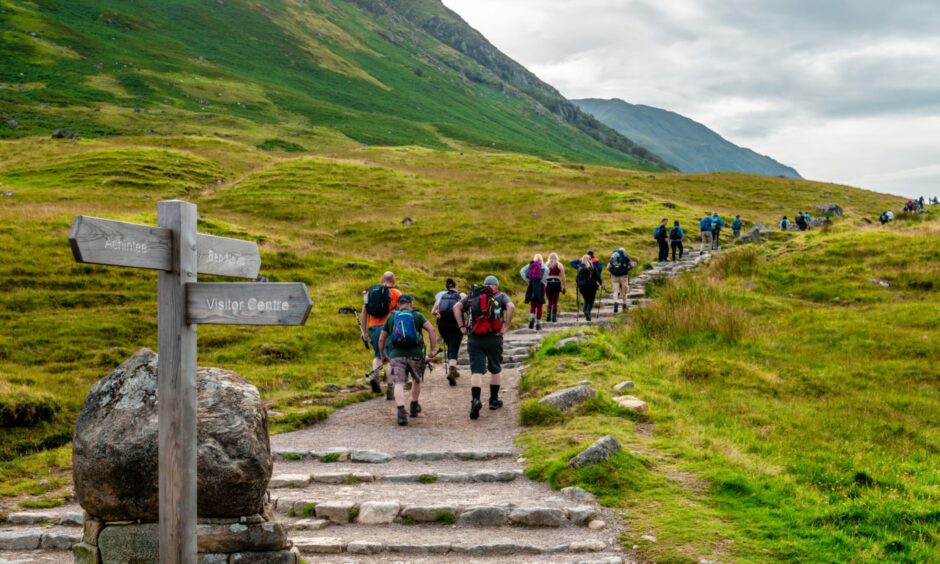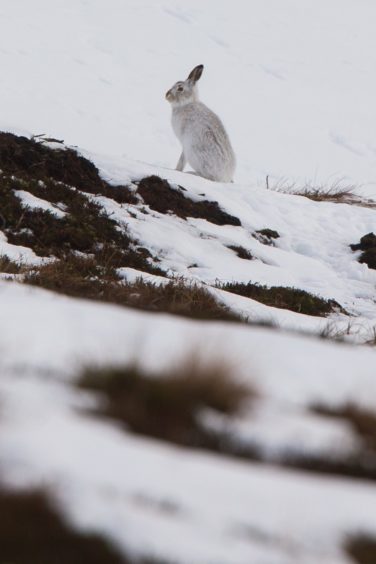In 1991, I climbed the Matterhorn in Switzerland. It was exactly 126 years to the day after the first ascent by Edward Whymper and his party and the first time I heard the term climate change used in reference to the mountains.
This iconic mountain, its sharp tooth-like shape straddling the border between Switzerland and Italy, rises to the heavens from a broad upland plinth.
It represents natural beauty and formidable challenge – the mountaineer’s mountain.
We spent the night before our ascent in the Hornli Hut – in those days a rather spartan refuge at the foot of the mountain’s Hornli Ridge.
I was wakened several times by the sound of substantial rockfall and in the morning I mentioned this to the hut’s guardian, a rather gruff Italian who commented that the Matterhorn was beautiful “only from a distance”.
Close-up it was a peeling, rotten carcass of a mountain, and rockfall was a continuous hazard.

“The mountain,” the guardian said, “is falling apart.”
After my ascent I spoke to several Swiss mountain guides about this issue and heard the term climate change applied to mountains for the first time.
Rock and scree – held in place by permafrost for millions of years – was being loosened because of rising temperatures and the ice was releasing its grip.
With my eyes now opened to the issue of climate change I began to notice other things.
The effect of flash floods. The shrinking of glaciers. And the disappearance of small springs that for generations had kept animals, as well as thirsty hikers and climbers, hydrated.
Climate change evidence – in the Himalayas and here
A few years later, trekking in the Hindu Kush area of Pakistan, we were camped on a riverside meadow when, all of a sudden, our porters jumped up and ran to higher ground, urgently beckoning us to follow.
Within minutes the gently flowing stream turned into a raging torrent, carrying rocks and boulders the size of footballs.
Fortunately our tents were far enough back to avoid catastrophe.
But the riverbank was torn away and it took a few hours for the waters to subside.
Our sirdar (Sherpa leader) reckoned a sudden and violent rainstorm upstream had created a flash flood of significant proportions.
Apparently such sudden rainstorms were becoming more frequent in the high mountains of the Himalayas.
In Scotland, I continued to climb hills and wander wild places, blissfully unaware of any real changes in the mountain environment.
I noticed a few more eroded footpaths, the occasional flash flood, some relatively snowless winters.
But generally the hills and mountains stayed the same as they had been for aeons.
However, our hills were changing, albeit slowly.
Rising temperatures means we now don’t have any glaciers in Scotland and, over the past 40 to 50 years, I’ve witnessed the severe shrinking of glaciers in the Alps and the Himalayas.
Mer de Glace from Signal Forbes (2200 m a.s.l.)
1890 | 2013 | 2021This is how the third largest glacier in the Alps is doing lately…#COP26 #ClimateActionNow pic.twitter.com/AH2MrrAaoO
— Melaine Le Roy (@subfossilguy) November 1, 2021
This leads to less water for consumption and irrigation, and lower hydroelectric energy generation capacity.
More than 9.6 billion tonnes of glacial ice have melted in the world since 1961, according to a 2019 satellite study by the University of Zurich.
And climate change threatens to evaporate more than a third of all glaciers by 2100, according to the World Wildlife Fund.
Rising temperatures wreaking havoc
Even a small rise in global temperatures can have devastating consequences, and we are already living with the results.
Sudden, violent rainstorms cause flash floods and landslips, especially in areas lacking afforestation – where new forests are planted across land without trees.
Think of the recent problems of the A83, the Rest And Be Thankful road, where a lack of forest cover means the surface earth and rocks of the slopes are susceptible to sliding in heavy rain.
Landslips and mudslides are commonplace in our hills and mountains, particularly in those areas where ground vegetation is shorn short by grazing deer or sheep, or where the land is managed for grouse shooting.
#A83 #RestAndBeThankful: The A83 remains open under traffic light control on a 24 hour basis. Teams remain onsite monitoring hillside and weather conditions. Construction work also continues on strengthening the landslide mitigation measures in the area. pic.twitter.com/IEOCr4QMz1
— BEAR NW Trunk Roads (@NWTrunkRoads) November 3, 2021
Even wooded areas are not entirely safe from flash floods.
Recently a large bank of the River Feshie in the Cairngorms was washed away when the river rose suddenly after ferocious rainfall, taking with it a popular footpath into upper Glen Feshie.
I’ve seen many similar instances in other areas of the Highlands, too.
Over the past 40 years, I’ve also noticed an increase in ticks and the associated debilitating condition, Lyme disease.
According to the Canadian Journal Of Infectious Diseases, the incidence of ticks is likely to be affected by climate change because an increasingly warm, wet climate allows them to thrive.
Ticks are also becoming more common in parts of Scotland due to increasing deer numbers.
And as mean temperatures continue to rise we could also see a greater influx of mosquitoes.
The dreaded midge – a fan of milder, wetter conditions – will be with us in even greater numbers.
Climate change, not walkers, to blame for damage to mountains
More recently, since Covid-19 lockdowns eased, there have been more people walking on Scotland’s hills.
I’ve had several conversations with seasoned hillwalkers complaining about the state of some footpaths.
Many assume the damage is due to new hikers – but I don’t think we can blame them solely.
In recent years, we’ve also seen an increase in the volume and intensity of rain showers.
And it is running water, not the boots of hillwalkers, that does most damage to mountain paths.
The Scottish Government’s climate change framework says a key consequence affecting hills is change to our ecosystems – some habitats and species are affected by changing snowfall and rain patterns.
“In addition, the climate space where certain habitats and species can exist is likely to shift,” it says.
“Some of these habitats and species are already at the edge of their ranges, with mainly northern or montane distributions, or they occur in habitats such as snowbeds.
“These species may have nowhere they can move to as their climate space in Scotland disappears.
“The challenge is to develop appropriate management for the uplands to increase the resilience of habitats, species and soil to climate change.”
So much to lose – and so much governments can do
We could lose species like the ptarmigan, dotterel, snow bunting and mountain hare.
Some of the finest cliff and scree flowers are found high up in habitats that are among the first to suffer from climate change.
A number of rare species grow there, including alpine saxifrage, Highland saxifrage, hare’s-foot sedge and curved wood-rush.
Where snow lies late into the spring, amazing “snowbed” communities of plants develop – adapted to survive the harshest of conditions.
It doesn’t take the nature-loving hillwalker long to realise the biggest and most obvious threat to these high mountain communities is climate change.
What is urgently needed is political will and our personal acceptance of the challenges we face.
We can overcome the worst excesses of climate change.
But we must stop worshipping at the altar of increased GDP and continual growth, issues that are simply unsustainable.
We need to decarbonise our economy, consider changing to plant-based diets and travel less.
Crucially, our governments need to start looking at the small print of climate change as well as the big headlines.
REVEALED: Nearly 1,000 representatives from the fossil fuel industry, big business and nuclear power companies have registered to attend the #COP26 climate summit in Glasgow.https://t.co/9T0e6k9KnG
— The Ferret (@FerretScot) November 7, 2021
It’s great we plan to plant millions of trees.
It’s great we are changing from an oil-based to a green economy.
But we also need to think about rewilding, wildlife protection and more protection for peatland areas.
We must also stop considering wild areas as places to be conquered and controlled for monetary or personal gain.
There are massive global decisions to be made.
At the very least we desperately need to scale up ambition to avert climate disaster.
Let’s hope COP26 can inspire such ambition.
This piece first appeared in the Scots Magazine November edition. See more at www.scotsmagazine.com and subscribe here.



